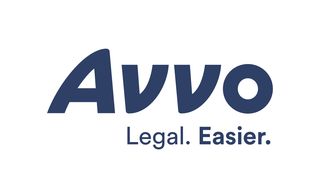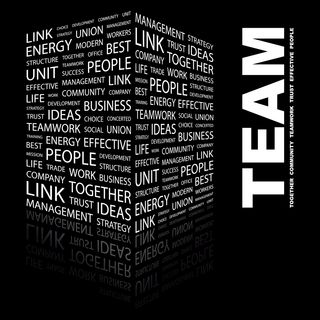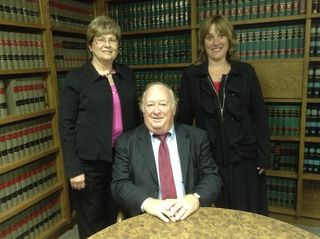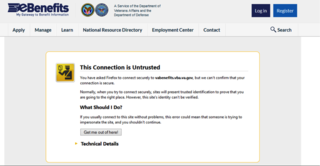Congratulations! You received approval of your VA Pension with Aid and Attendance claim. Your job is done, right? Well, not quite.
 Once you receive an approval letter, there are three steps your firm should follow: Review for accuracy, identify next action, and then inform your client of the results and what to do next.
Once you receive an approval letter, there are three steps your firm should follow: Review for accuracy, identify next action, and then inform your client of the results and what to do next.
Review for accuracy
Just because you have an approval does not mean there are no errors in the decision. The two main issues to check are (1) the effective date (payment start date) and (2) the monthly benefit amount. You should already have a pretty clear understanding of the eligibility date and the expected amount when you file the formal claim. The payment start date should be the first day of the month following the month in which you submitted the informal claim/intent to file or formal claim. For example, if an intent to file was submitted and received by the VA on May 20, 2015, then the eligibility date would be June 1, 2015. The monthly benefit amount, assuming that the financial information you had was accurate, is the Maximum Annual Pension Rate (divided by 12) minus Income for VA Purposes (IVAP). For example, the Maximum Annual Pension Rate (MAPR) for a married veteran who needs the aid and attendance of another person with activities of daily living is $2,120 per month. The gross income of the veteran and the spouse is $4,500 per month. After deducting the veteran’s assisted living facility costs of $5,000, the IVAP is $0. Thus, the difference between the monthly MAPR of $2,120 and $0 is $2,120 and the veteran would be paid the maximum.
When using the Lawyers with Purpose copyrighted VA Benefits Qualification Worksheet, these figures are automatically calculated for you. On the approval letter from the VA, this information is generally found on the first page in the form of a table. This table will have at least three columns for “Monthly Entitlement Amount,” “Payment Start Date,” and “Reason for Change,” and as many rows as there are changes in rate.
Identify next action
If there are errors, then you should identify the deadline for your response. Responses may include a Request for Reconsideration (RFR) and/or a Notice of Disagreement (NOD). You should also identify what further information you may need in order to document the grounds for your RFR or NOD. The NOD must be filed within one year of the date on the decision letter. More information regarding this process can be found in the blog post, “What To Do With A Denied VA Application – Part 2”
In contrast, there is no real deadline for the request for reconsideration, as it is not a formal VA adjudication process. The RFR is essentially the request that the original adjudicator reconsider his/her original decision because you can provide new information or enlightenment regarding previously submitted information that the VA failed to interpret per their regulations. It is always worth filing a request for reconsideration, even if you plan to file a Notice of Disagreement, because the former process is much quicker than the NOD route. If there are no errors in the approval, the next action may be simply to inform the client. However, the VA may propose a finding of incompetency on the basis of the physician’s statement (VA form 21-2680) provided with the claim. You will immediately know if there is an incompetency proposal because there will be two extra columns in the table already mentioned, titled “Amount Withheld” and “Amount Paid.” There is also an additional section in the letter called, “We Have Withheld Benefits.” Sometimes the VA includes a simple response form to complete and return, but even if it does not, you should respond by returning a 21-4138 Statement in Support of Claim that acknowledges and accepts the finding of incompetency and nominates a fiduciary, usually a family member.
Inform the client
Once you identify the next action, you must inform the client – preferably in writing – of the accuracy of the approval letter and explain the next step(s), if any. This can be as simple as confirming the approval and the monthly benefit amount. It should also explain when to expect the first monthly deposit as well as the receipt of any lump sum retroactive benefits. If applicable, you would also describe what to expect during the fiduciary process or appeal. Finally, be sure to be specific in any requests for further documentation to expedite data collection and your responsiveness to the VA. Getting an approved VA claim can be a challenge. You should celebrate each one! However, don’t overlook these three essential steps. Incorporate them into your firm’s processes. Congratulations!
If you would like to learn more about creating the estate or elder law practice of your dreams, join our webinar "Having The Time To Have It All" on July 23rd at 2 EST and learn about how Lawyers With Purpose can help get you there. Click here to register and reserve your spot today.
By Sabrina A. Scott, Paralegal, The Elder & Disability Law Firm of Victoria L. Collier, PC and VA Production Coordinator for Lawyers With Purpose.
Victoria L. Collier, Veteran of the United States Air Force, 1989-1995 and United States Army Reserves, 2001-2004. Victoria is a Certified Elder Law Attorney through the National Elder Law Foundation; Author of “47 Secret Veterans Benefits for Seniors”; Author of “Paying for Long Term Care: Financial Help for Wartime Veterans: The VA Aid & Attendance Benefit”; Founder of The Elder & Disability Law Firm of Victoria L. Collier, PC; Co-Founder of Lawyers for Wartime Veterans; and Co-Founder of Veterans Advocate Group of America.










